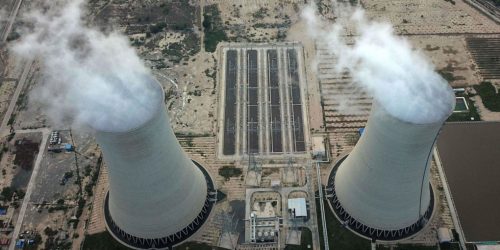Coal-gas fuel-switching dynamics are pointing to different outlooks for coal burn this winter across different regions.
In Europe, high gas prices imply coal demand should remain firm, while in northeast Asia relatively competitive oil-linked LNG costs suggest coal demand may face some headwinds.
Higher gas prices and associated gas-to-coal switching dynamics have been a key driver behind coal demand growth in Europe in recent months.
German coal-fired generation in September and October to date was 5.67TWh and 3.65TWh, up by 41pc and 14pc on the year, respectively, data from German research institute Fraunhofer Ise show.
And the outlook into the first quarter of 2022 based on forward prices on 26 October suggests gas-to-coal switching dynamics remain in favour of coal and that European coal burn will remain elevated.
The first-quarter 2022 clean dark spread for a 42pc-efficient German coal-fired plant is €86.05/MWh, compared with the equivalent clean spark spread of €0.63/MWh for a 55pc-efficient gas-fired plant, based on 26 October prices.
These favourable margins suggest all available coal-fired power plants in Germany could fully run as base load during this period, although actual generation levels will depend on prevailing renewables output and other factors.
According to the European Energy Exchange (EEX) transparency platform, available German coal-fired capacity for the first quarter of 2022 is currently at 14.6GW. Assuming a load factor of 70pc and an average efficiency of 42pc, monthly coal burn in Germany in the first quarter of next year could increase by 82pc on the year to an average of 7.4TWh. This is equivalent to 2.5mn t of NAR 6,000 kcal/kg coal burned in 42pc-efficient plants.
The outlook remains subject to how temperatures and wind conditions ultimately turn out, while a rapid improvement in European gas fundamentals in theory could drive gas prices back down to coal-to-gas switching territory. This would lead to downward adjustments of coal burn and potentially ease tightness in global coal markets.
But the Dutch TTF first-quarter 2022 gas contract would need to decline by €47/MWh, or 55pc, for a 55pc-efficient gas-fired plant to become competitive with a 42pc-efficient coal-fired plant for this period, based on 26 October gas, coal, carbon and power prices.
European gas fundamentals
Gas fundamentals in Europe remain generally tight. Underground gas storage levels in the region were 77pc full at 849TWh as of 24 October, 18 percentage points emptier than a year ago, according to GIE transparency data.
Meanwhile, northeast Asian spot LNG prices continue to hold a premium over European gas hub prices, which should continue to cap the volume of flexible LNG cargoes arriving in northwest Europe.
On the flip side, Russia’s domestic gas stockbuild was 97pc complete as of 20 October, and the country’s energy minister said stocks should reach government targets by 1 November. This could leave state-owned supplier Gazprom with more supply to export to Europe, either to inject into its own capacity at European storage facilities or to supplement its contractual sales.
Northeast Asia coal burn
Northeast Asia could see the opposite fuel-switch trend from that of Europe this winter as rising coal prices relative to oil-indexed LNG — the key method that many consumers use to import their gas — are pushing gas prices deeper into coal-gas fuel-switching territory.
In Japan, coal’s cost advantage over gas in terms of utilities’ generation costs narrowed to $12.73/MWh in September, its lowest level since April, based on Argus’ calculations using customs data and relevant taxes. This is based on the assumed generation cost of a 38pc-efficient coal-fired plant of $55.60/MWh and the equivalent cost of a 55pc-efficient gas-fired plant of $68.33/MWh.
And forward prices imply that gas should remain in fuel-switching territory over the winter, with gas’ competitiveness peaking this month and into November, before steadily easing afterwards (see chart).
It is a similar story in South Korea, with oil-linked gas costs weighing on coal-fired generation, although particularly firm gas demand has led South Korean utilities to turn increasingly to the spot LNG market and be exposed to record-high prices. This has prompted the government to lift restrictions on coal-fired generation — at least in the short term — and could partially mitigate the impact of gas-coal fuel switching in the near term.
The outlook in northeast Asia is subject to future oil price movements, given the linkage built into term LNG contracts. If the oil price moves higher, it could skew the fuel-switching dynamic back in favour of coal.





